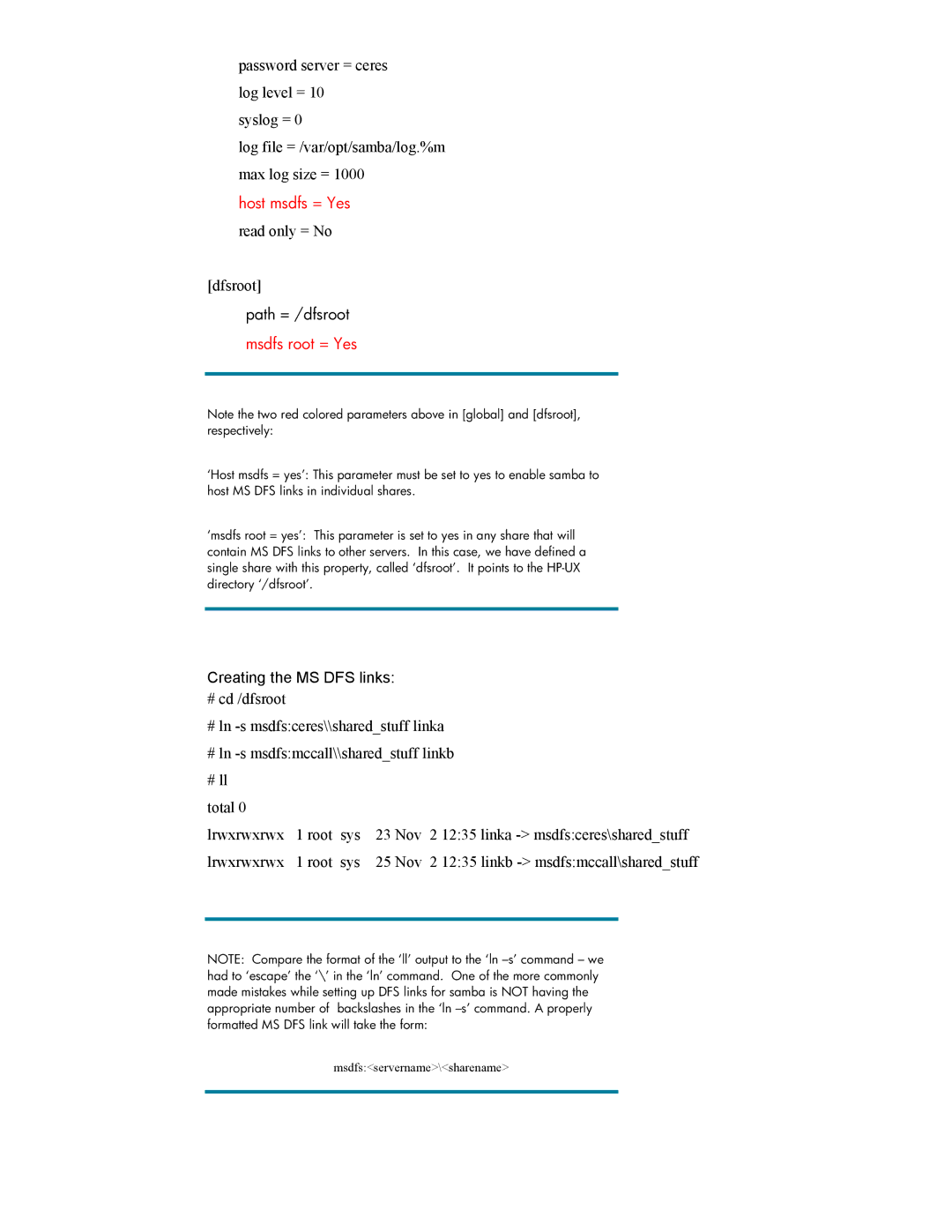
password server = ceres log level = 10
syslog = 0
log file = /var/opt/samba/log.%m max log size = 1000
host msdfs = Yes
read only = No
[dfsroot]
path = /dfsroot
msdfs root = Yes
Note the two red colored parameters above in [global] and [dfsroot], respectively:
‘Host msdfs = yes’: This parameter must be set to yes to enable samba to host MS DFS links in individual shares.
‘msdfs root = yes’: This parameter is set to yes in any share that will contain MS DFS links to other servers. In this case, we have defined a single share with this property, called ‘dfsroot’. It points to the
Creating the MS DFS links:
#cd /dfsroot
#ln
#ln
#ll
total 0 |
|
|
|
|
lrwxrwxrwx | 1 root | sys | 23 Nov | 2 12:35 linka |
lrwxrwxrwx | 1 root | sys | 25 Nov | 2 12:35 linkb |
NOTE: Compare the format of the ‘ll’ output to the ‘ln
msdfs:<servername>\<sharename>
